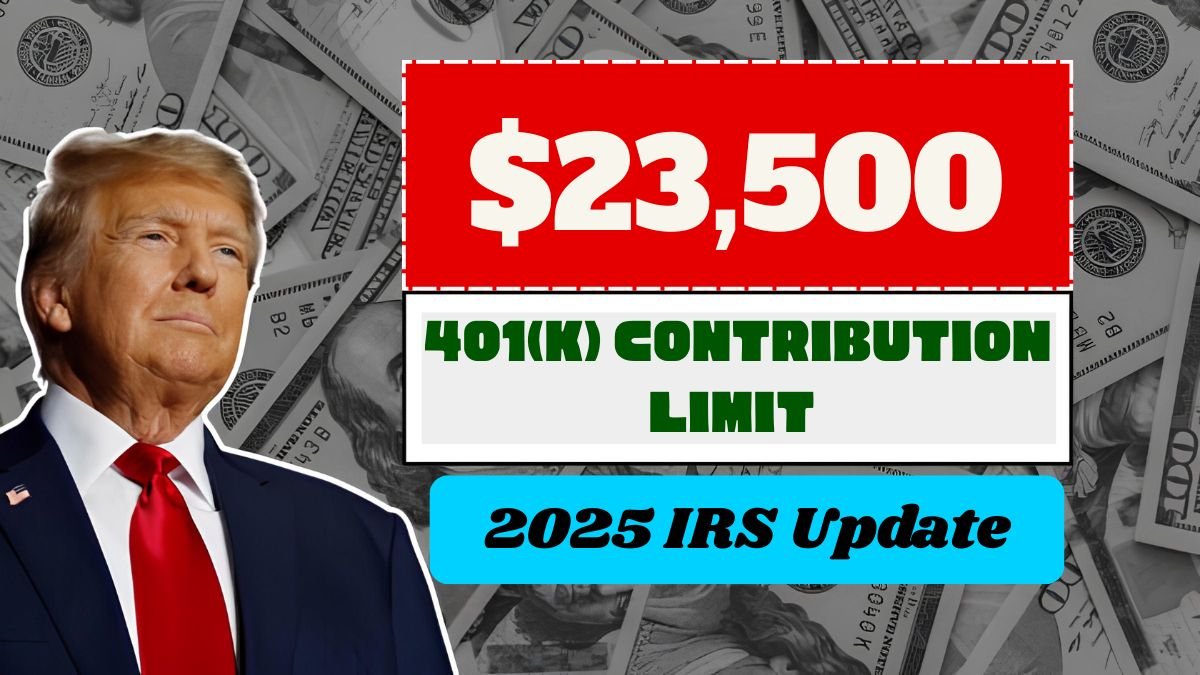IRS Update: 401(k) Contribution Limit Rises to $23,500: The IRS has announced new limits for retirement savings for 2025. There is good news for those investing in 401(k) plans as the contribution limit has been slightly increased. Meanwhile, the limit for IRA (Individual Retirement Account) will remain the same. Let’s break down these updates in simple terms and understand how they affect your retirement planning.
What is 401(k) and the New Changes for 2025?
A 401(k) is one of America’s most popular retirement savings plans. It allows you to contribute a portion of your salary into a tax-advantaged account. Many employers also offer a matching contribution, meaning they add an equal amount or a percentage of what you contribute.
New Update for 401(k)
- 2024 limit: $23,000
- 2025 limit: $23,500
This increase of $500 might seem small, but it can have a significant impact over time.
Example:
If you save an extra $500 per year starting at age 25 with an assumed 7% average return, by age 65, this additional contribution alone could grow to approximately $74,000.
Catch-Up Contribution for Older Investors
The IRS allows catch-up contributions for those aged 50 and above to help them save more as they approach retirement.
- Additional contribution for those 50+ in 401(k): $7,500
- Total contribution limit for 50+ in 2025: $31,000 per year
- For ages 60–63: Catch-up limit can increase up to $11,250
- Example: If you are 61, you can contribute up to $34,750 ($23,500 + $11,250)

IRA Limits for 2025
Many people also invest in an IRA for additional retirement savings with tax benefits.
New Update for IRA
- Standard IRA limit: $7,000
- Catch-up contribution for age 50+: $1,000
- Total for 50+ years: $8,000
Income Phase-Out Range for Traditional IRA Deduction
The IRS updates the income limits each year to determine eligibility for tax deductions.
- Single taxpayers: $79,000 – $89,000 (was $77,000 – $87,000)
- Married filing jointly: $126,000 – $146,000 (was $123,000 – $143,000)
- One spouse covered: $236,000 – $246,000
Income Limits for Roth IRA
Roth IRA contributions are made from post-tax income but grow tax-free.
- Single/Head of Household: $150,000 – $165,000 (was $146,000 – $161,000)
- Married filing jointly: $236,000 – $246,000
Changes in SIMPLE Plans
SIMPLE plans are designed for small businesses and self-employed individuals.
- 2024 limit: $16,000
- 2025 limit: $16,500
- In some special SIMPLE accounts: up to $17,600
- Catch-up contribution for 50+: $3,500
- Special cases for 60–63 years: up to $3,850 – $5,250
Saver’s Credit Limit Increase
The Saver’s Credit provides tax credits for low- and middle-income individuals saving for retirement.
- Married couples: $79,000 (was $76,500)
- Head of Household: $59,250 (was $57,375)
- Singles: $39,500 (was $38,250)
Why These Changes Matter
- Opportunity to save more: Even a small increase can have a long-term impact.
- Tax benefits: Contributions reduce taxable income.
- Retirement security: Higher limits help secure your future during inflation.
- Age advantage: Catch-up contributions allow older investors to save more.
Who Benefits the Most?
- Young professionals: Benefit from starting early and compounding.
- Mid-age workers: Save taxes while contributing to 401(k) and Roth IRA.
- People 60+: Larger catch-up contributions allow bigger savings near retirement.
- Low- and middle-income earners: Higher Saver’s Credit limits provide extra tax benefits.
Conclusion
The IRS’s 2025 updates are crucial for every American worker and taxpayer:
- 401(k) limit: $23,500
- IRA limit: $7,000
- Catch-up contributions: Higher limits for 50+ and 60+
- Income phase-outs and Saver’s Credit: Updated to reflect 2025 changes
By understanding and taking advantage of these limits, you can maximize your retirement savings, enjoy tax benefits, and build a more secure financial future.

